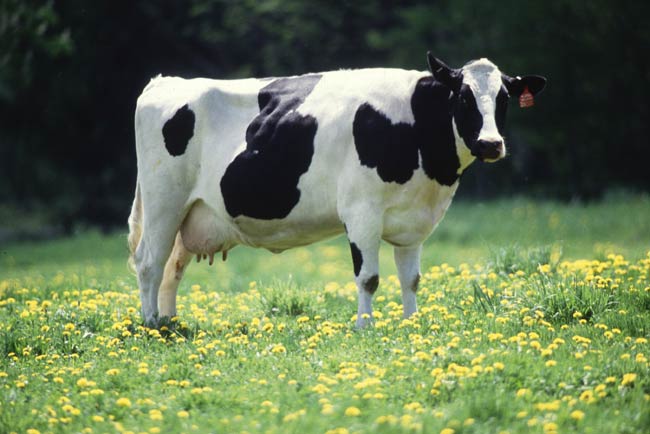Airborne Mad Cow Disease Possible, But Unlikely

Prions, the proteins that cause mad cow disease and Creutzfeldt-Jakob disorder, aren't just spread through contaminated food — a new animal study suggests they can also be spread through the air.
Exposure to an aerosol spray containing prions for one minute was enough to infect mice with the brain cell-destroying proteins, the study showed.
But because researchers used a highly concentrated spray, the findings don't mean people should be concerned about getting mad cow disease just by breathing near an infected animal, said Dr. Valerie Sim, an assistant professor who researches prions at the University of Alberta and wasn't involved in the study.
"There is no evidence that any prion diseases are naturally transmissible by air," Sim told MyHealthNewsDaily. "Rather, all the evidence suggests they are not."
Still, the fact that it is technically possible to transmit prion infections in this way helps researchers gain new insights into prion diseases.
Nearly 300 people around the world have died from eating meat from infected cows. Mad cow disease, also called bovine spongiform encephalopathy, has killed more than 280,000 cows in the last few decades.
The study was published today (Jan. 13) in the journal PLoS Pathogens.
Get the world’s most fascinating discoveries delivered straight to your inbox.
Exposing the mice
Previously, scientists thought prion infections could only be spread by eating contaminated food or coming into contact with contaminated surgical instruments or blood.
The new finding suggests prions can travel into an animal's brain via the olfactory nerves in the nose, said study researchers from the University of Zurich in Switzerland.
Researcher Adriano Aguzzi and his colleagues made a highly concentrated aerosol spray containing prions from the brain tissue of infected mice. They then sprayed the aerosol directly into the faces of the uninfected mice using a nebulizer (similar to nebulizers used by asthma patients to receive medicine).
The longer the mice were exposed to the aerosol, the more quickly the disease's symptoms appeared, according to the study. In fact, the length of time the mice were exposed to the aerosol mattered more than the concentration strength of the aerosol the researchers used.
The lab versus real life
Although the study showed it's possible for prions in an aerosol form to infect mice, it's highly unlikely in real life that a person would be exposed to prions in this way, Sim said.
And when the infected mice were left to breathe next to uninfected mice, none of the uninfected mice developed an infection, she said.
Mad cow disease has never been shown in a natural setting to be transmitted through the air, said Debbie McKenzie, an associate professor who studies prion transmission at the University of Alberta.
"Even at the height of the BSE (mad cow disease) epidemic in the [United Kingdom], the disease was generally limited to one to two cows in a herd," she told MyHealthNewsDaily.
McKenzie said she doesn't see a need to change public health measures as a result of the finding.
Pass it on: Prions, which cause mad cow disease, can technically spread through the air if highly concentrated, but researchers say this doesn't happen in a natural setting.
- Creutzfeldt-Jakob Disease: Symptoms, Diagnosis & Treatment
- Top 10 Mysterious Diseases
- 7 Weirdest Medical Conditions
Follow MyHealthNewsDaily staff writer Amanda Chan on Twitter @AmandaLChan.
This article was provided by MyHealthNewsDaily, a sister site to LiveScience.



